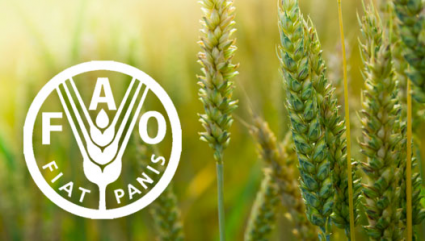The UN FAO grain and vegetable oil price index began to decline for the first time in a year

In the first 12 months of the past, the FAO Food Price Index (CPI) in June 2021 showed a drop of 2.5% compared to the previous month, although compared to June 2020, it remains 33.9% higher.
Lower prices for vegetable oils, cereals and slightly dairy products were the main reasons for the decline in the index, while meat and sugar prices continued to rise.
The average value of the FAO grain price index in June was 129.4 points, which is 2.6% lower than in May, but 33.8% higher than in June 2020.
Global corn prices, which reached their highest level since January 2013 in May, fell 5% in June, but were still more than 72% higher than in the same period last year. In Argentina, corn prices fell as a result of an increase in supply due to the new crop, the volume of which was larger than previously expected. Despite the drought losses in Brazil, the current corn harvest has also put downward pressure on prices. In the United States, corn prices fell due to favorable weather for corn crops.
Global wheat prices fell by only 0.8% in June, and exceed last year's figure by more than 31%. Favorable weather conditions in the main exporting countries will continue to reduce wheat prices.
Global rice prices also declined in June, reaching their lowest level in fifteen months, while high transport tariffs and a shortage of containers continued to constrain export sales.
The average value of the FAO Vegetable Oil Price Index in June was 157.5 points, which is 9.8% lower than in May and is the lowest figure in the last four months. This significant decrease compared to the previous month is mainly due to lower prices for palm, soybean and sunflower oils. After steady growth for twelve months in June, global palm oil prices declined mainly due to the expected seasonal increase in production volumes in leading producing countries and against the background of low import demand. In addition, sluggish global import demand has led to lower prices for soybean and sunflower oils.
As for soybean oil, the decline in prices was further supported by expectations of less active than previously expected demand from biodiesel producers in the United States. Global rapeseed oil prices, on the contrary, were out of the general downward trend in vegetable oil prices due to the projected recovery in demand in the European Union as a result of the easing of quarantine restrictions.
The average value of the FAO Dairy Price Index in June was 119.9 points, which is 1% lower than in May, but remains 22% higher than a year ago.
A seasonal increase in supply and a sharp decline in global import demand will continue to reduce prices.
The average value of the FAO Meat Price Index* in June was 109.6 points, which is 2.1% higher than in May and 15.6% more than a year ago, but still 8% lower than the maximum level in August 2014.
Prices continued to rise amid reduced supply from the United States and Brazil and increased demand from the catering sector, despite a decline in the pace of pork purchases from China.
The average value of the FAO Sugar Price Index in June was 107.7 points, which is 0.9% higher than its May value and reached another multi-year high. The increase in prices was caused by uncertainty with the sugar cane crop in Brazil amid dry conditions, as well as rising oil prices, which may cause an increase in the volume of processing cane for ethanol, rather than for sugar production.
Favorable conditions improve the prospects for sugar production and export in India, which limits further growth in sugar prices.


